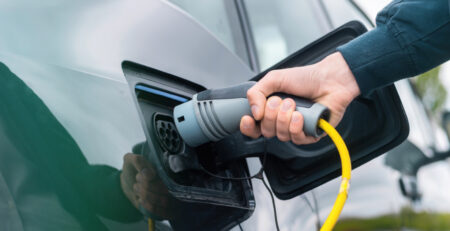Is it safe to set up EV charging stations near petrol pumps?
Should we set up an electric vehicle, aka EV charging station at a petrol pumps? The answer is simply no. Although many National Oil Companies (NOCs) are led to believe that petrol pumps can be easily converted to EV charging stations, there are a few challenges, technical and non-technical.
Through a technical perspective, it is hazardous to put an EV charging point at a petrol pump. Petrol pumps dispense motor spirit (MS) as well as high speed diesel (HSD), both of which release inflammable fumes when they are dispensed into vehicles.
In technical terms, a petrol pump falls in the Zone 2 category. Zone 0 is referred to a place or an entity that contains inflammable substance. Hence, petrol tanks that are used for refilling the petrol storage are considered to be Zone 0. Zone 1 is used for referring to those bodies that continuously release inflammable fumes, whereas Zone 2 is for those places that release inflammable fumes intermittently.
Every time a vehicle is being refueled, inflammable fumes are released into the atmosphere, which can cause a fire mishap in the presence of a spark or heat.
Additionally, there are several guidelines for avoiding fire hazard. The guidelines specify that 30 feet away from Zone 2 is deemed safe for performing any other activity. Therefore, a charger, which is certainly not a flameproof device, cannot be mounted in a close proximity to a petrol pump.
There is lack of sufficient space in most urban areas, making it nearly impossible to find the required space for setting up a charging station 30 feet away from a petrol pump. So, unless the petrol pump owners fully discard the petrol or diesel dispensing pumps, they cannot set up an EV charging station at that location.
Those who are unaware of the various Zone limits and the Ingress Protection (IP) rating of chargers are of the opinion that EV charging points can be installed in the same premises as petrol pumps.
From a non-technical perspective, the time taken to refill a petrol or diesel tank is roughly 5-10 minutes, depending on the size of the fuel tank. Including the transaction, the total time taken would not exceed 15 minutes, unless there is an extremely long queue. On the contrary, charging an EV takes at least 30-50 minutes, if not more. The time taken for charging largely depends on the output range of the charger, the battery capacity, and on the pre-existing charging of the battery.
AC chargers would take up to more than an hour to charge a partially-charged battery. DC chargers would take a lot less time, making them ideal for destination charging, at places such as the highway. However, DC chargers would also take a minimum of 30-50 minutes to charge an EV (depending on the how much % battery was filled)
In the meanwhile, EV owners need to meaningfully occupy themselves. They need to be made comfortable and may want some refreshments. Setting up a café or a small food corner is an excellent way for them to spend their time while they wait for their EV to get charged. Other facilities, such as a convenience store or a bookstore/library could also be added to the premises. However, real estate, i.e., this much space is a massive challenge in any city. Adding a café or any recreational centre will require additional space and also power supply.
Existing electrical infrastructure is another challenge. Most of the petrol pumps were constructed much before the advent of electric vehicles. Therefore, there is no provision for additional electrical supply, no space for transformer/Distribution Box (DB), etc., which are pre-requisites for putting up EV charging stations.
At certain destinations, AC chargers cannot be used because of the limited stay time of vehicles. For a faster turnaround, the owners would have to deploy DC chargers. The additional load demand would most likely exceed the Low Tension (LT) limits set by many Distribution Companies (DISCOMs). For instance, two DC chargers would need 120+KVA connection, which would require a connection to the High Tension (HT) line. An HT connection and its routine charges surpass LT connections and requires separate documentation and provision.
Hence, it is a challenge to set up an EV charging station near a petrol pump, with regards to safety as well as infrastructure.








Leave a Reply